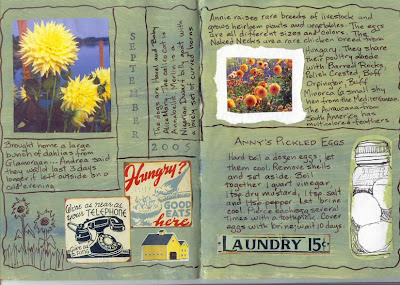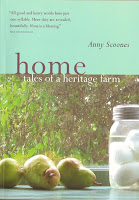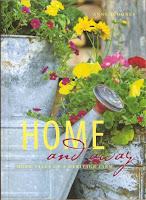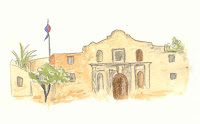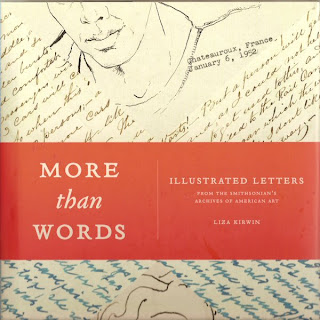
Today, when personal communication more than likely travels through the ether, and the postman is relegated to delivering bills and junk mail, this epistolary art might serve a purpose.
Writing to wives, lovers, friends, patrons, clients, and confidants, letters date back to 1813. The most recent1982. Short ones, long ones, humorous and poignant. Lovely handwriting and each has some sort of illustration ... some are stick figures, others elaborate watercolor paintings, or pen-and-ink drawings. One is typewritten on one of those very old manual typewriters. Charming vignettes, caricatures, portraits, and landscapes, revealing the joys and successes, loves and longings, triumphs and frustrations of the authors' personal lives.
In the back of the book is a section with verbatim transcriptions, preserving the exact spelling and punctuation of the originals. As you might imagine, some of the handwriting is not easy to decipher.
In 1912, caricaturist Alfred Frueh writes from Scotland, "an I hae in mind to gay to dancin's chool and learn how to highland fling but I hae me doots whither I kin larn it."
Frida Kahlo writes to Emmy Lou Packard in 1940, thanking her for taking such good care of her former husband Diego Revera. Joseph Linden Smith writes to his little brother, instructing him to take the two dollars from under the arm (through a slit on the page) and give it to their father. There are far too many to list here, but some are Frederic Edwin Church, Thomas Eakins, Winslow Homer, Andrew Wyeth, Rockwell Kent, Fyonel Feininger, John Sloan, Man Ray, Alexander Calder, Dorothea Tanning, Gio Ponto, and Andy Warhol ... all are endlessly fascinating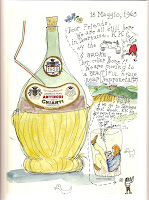
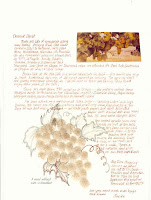
Here is one of my attempts at illustrated letters ... during a road trip through the wine country of Oregon. The grapes are made with thumb prints in walnut ink

